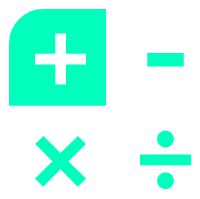Master the art of adding fractions effortlessly. Learn common denominators, equivalent fractions, and simplification techniques. Gain confidence in fraction addition through practical examples. Enhance your mathematical skills and conquer fractional arithmetic.
Mastering Addition with Fractions: Unlocking the Magic of Fractional Arithmetic
Adding fractions is a fundamental skill in mathematics that allows us to combine fractional quantities and find their sum. It is a crucial concept for everyday calculations and serves as a stepping stone to more advanced mathematical concepts. In this blog post, we will delve into the world of addition with fractions, exploring its significance and unraveling key techniques. Through clear explanations and practical examples, we will provide you with the tools to master the art of adding fractions effortlessly.

Check Out Our Free Addition Worksheets
Understanding Fraction Addition
To begin our journey, let’s develop a solid understanding of fraction addition. Adding fractions involves combining two or more fractional quantities to find their total. However, due to the varying denominators, special techniques are required to ensure accurate results. By grasping the concepts of common denominators, equivalent fractions, and simplification, you will lay the groundwork for successful fraction addition.
Finding Common Denominators
To initiate the process of adding fractions, the initial step involves identifying a shared denominator. This ensures that the fractions have the same denominator, making them compatible for addition. There are various methods to identify common denominators, including finding the least common multiple (LCM) or multiplying the denominators. We will explore these methods in detail and provide step-by-step examples to illustrate the process. Additionally, we will discuss the importance of choosing the least common denominator to simplify calculations.
Equivalent Fractions
Equivalent fractions play a crucial role in fraction addition. By converting fractions into equivalent forms with a common denominator, we can seamlessly add the numerators. We will learn techniques to determine equivalent fractions, such as multiplying both the numerator and denominator by the same factor. Through illustrative examples, you will grasp the concept of equivalence and its significance in fraction arithmetic. Understanding equivalent fractions enhances your ability to add fractions accurately and efficiently.
Addition Examples
To solidify your understanding, let’s explore practical examples of fraction addition.
Example 1: Adding Proper Fractions
Let’s add 3/4 and 1/5. To add these fractions, we first find the least common denominator, which in this case is 20. We convert both fractions to equivalent forms with a denominator of 20: 15/20 and 4/20. Now, we simply add the numerators: 15 + 4 = 19. The sum is 19/20.
Example 2: Adding Mixed Numbers
Let’s add 2 3/4 and 1 1/3. To add mixed numbers, we convert them into improper fractions. 2 3/4 becomes 11/4, and 1 1/3 becomes 4/3. We find the least common denominator, which is 12, and convert both fractions to equivalent forms with a denominator of 12: 33/12 and 16/12. Adding the numerators, we get 33 + 16 = 49. The sum is 49/12, which can be simplified to 4 1/12.
Through these examples, you can see how the concepts of common denominators and equivalent fractions are applied in real addition scenarios.
Simplification and Final Remarks
After adding fractions, it is often necessary to simplify the result. Simplifying fractions involves finding the greatest common divisor (GCD) and dividing both the numerator and denominator by it. We will discuss techniques to simplify fractions and emphasize the importance of presenting fractions in their simplest form.

Check Out What is 2/5 as a Percentage
Summary
To sum up, mastering addition with fractions is essential for developing strong mathematical skills. By grasping concepts such as common denominators, equivalent fractions, and simplification, you unlock the magic of fractional arithmetic. The ability to add fractions accurately and efficiently opens doors to various applications in both practical and theoretical contexts.
By following the step-by-step examples and understanding the underlying concepts, you can confidently tackle fraction addition, whether it involves proper fractions, mixed numbers, or other scenarios. Building a solid foundation in addition with fractions will not only enhance your mathematical prowess but also provide you with problem-solving skills that extend beyond the realm of mathematics.
Moreover, the skills acquired through fraction addition extend to other areas of mathematics, such as algebra, geometry, and calculus. Fractional quantities frequently appear in equations, word problems, and geometric calculations. Mastering addition with fractions lays the groundwork for future mathematical endeavors, allowing you to approach more complex concepts with confidence.
In your academic journey, fraction addition will become second nature, and you will realize its significance in a wide range of disciplines, from science and engineering to finance and economics. It is a fundamental tool that empowers you to make accurate calculations, analyze data, and solve real-world problems.
So, embrace the world of fraction addition and enhance your mathematical skills through the mastery of fractional arithmetic. Continuously practice adding fractions, challenge yourself with more complex examples, and explore further applications in your studies. With determination and perseverance, you will conquer the realm of addition with fractions and open doors to a world of mathematical possibilities.
Remember, the magic of fraction addition lies within your grasp. Unlock it, and embark on an exciting journey of mathematical exploration and problem-solving excellence.